Previously: Open City: Designing Coexistence – Part 1, Community and Part 2, Refuge.
Third part of my report on Open City: Designing Coexistence, the main exhibition of the 4th International Architecture Biennale in Rotterdam.
The idea of the Open City is understood as ‘an urban condition that enables diverse cultures and lifestyles to coexist’. The exhibition was subdivided in 7 sections, one of them was dedicated to Reciprocity – Urban Bartering Strategies in Jakarta.
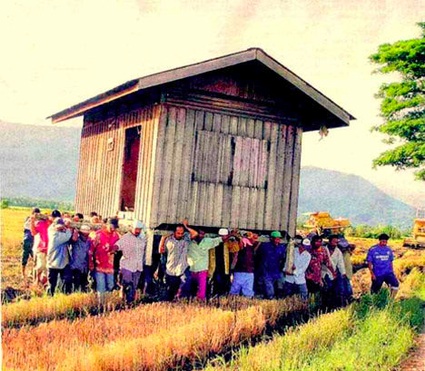 Source: The New Straits Times Press, Malaysia, 15th August, 2007. Photo by Rahmat Othman (via)
Source: The New Straits Times Press, Malaysia, 15th August, 2007. Photo by Rahmat Othman (via)
In the Summer of 2007, the photo pasted above toured the blogs. Farmer Abu Hassan Ahmad had to move in order to be closer to his mother. He was so attached to his home, he decided to take it with him. “The 56 year old farmer said several village elders got about 150 villagers to help with the ‘big move”. Besides helping to carry the house half a kilometer to the new site, the villagers also took part in a “gotong-royong” (communal working together) to clear the land at the new location. It took an hour to move the house.”
The picture illustrates in a striking way the concept that the Reciprocity section of the Open City exhibition explores. Before i go any further i need to mention that the exhibition design of Reciprocity was stunning. It was inspired by the Wayang Kulit, Indonesia’s famous shadow puppets:
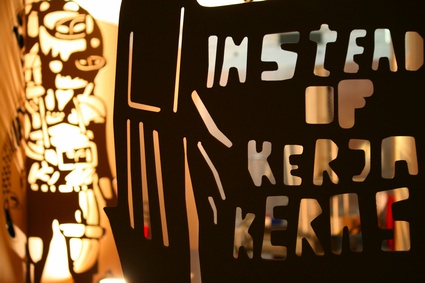 Photo Exhibition © Michelle Wilderom
Photo Exhibition © Michelle Wilderom
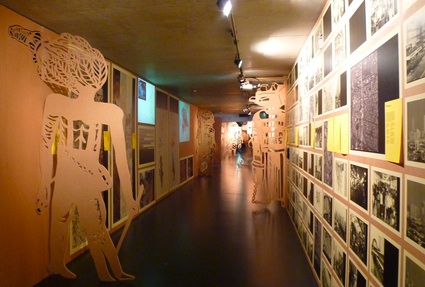
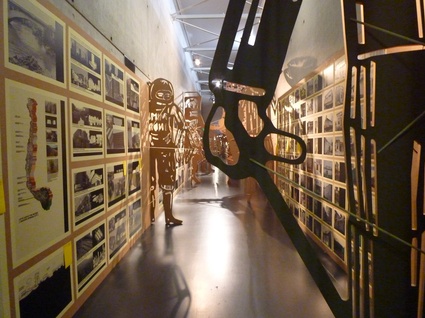 Reciprocity – Urban Bartering Strategies in Jakarta focuses on the capital and largest city of Indonesia. Curators Daliana Suryawinata and Stephen Cairns investigated the key role that bartering is fulfilling in developing countries. It is estimated that between half and 3/4ths of the economies in developing countries are based on reciprocity. Around 40% of the GNP is generated in shadow economies that rests on this practices of give and take. This kind of informal economy is not only often more important than the official economy, its importance will also increase dramatically in the coming years as the cities in poor countries undergo explosive population growth. Whether it entails physical goods or services, reciprocity often comes with an emotional, personal component.
Reciprocity – Urban Bartering Strategies in Jakarta focuses on the capital and largest city of Indonesia. Curators Daliana Suryawinata and Stephen Cairns investigated the key role that bartering is fulfilling in developing countries. It is estimated that between half and 3/4ths of the economies in developing countries are based on reciprocity. Around 40% of the GNP is generated in shadow economies that rests on this practices of give and take. This kind of informal economy is not only often more important than the official economy, its importance will also increase dramatically in the coming years as the cities in poor countries undergo explosive population growth. Whether it entails physical goods or services, reciprocity often comes with an emotional, personal component.
Reciprocity examines how this system of barter and returning of favors affects the infrastructure and vitality of Jakarta where a large majority of its 23 million inhabitants receives its wages in kind, and creates its own alternative chain of supply and demand.
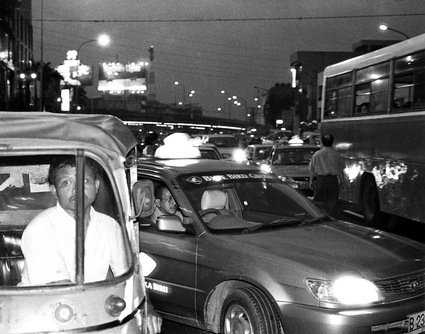 Urban situations: Traffic congestion. © Erik Prasetya
Urban situations: Traffic congestion. © Erik Prasetya
Because the practice has permeated all aspects of their society, Indonesians have an expression for this form of informal economy. They call it Gotong royong, an expression often translated into English as ‘reciprocity’ or ‘mutual assistance’.
Through an idea competition called Gotong Royong City, the IABR in collaboration with Ikatan Arsitek invited architects and urban designers to reflect on the way Gotong Royong might be re-invented and applied to reform urban and architectural life.
The winning entry was the design concept “Jakarta Bersih!” by Dutch firm Nunc Architects.
Nunc’s plan relocates a part of the overpopulated Kampung into two-sided high-rise
buildings that would leave space for open green areas. On top of the structure would be a waste processing machine that would handle all types of waste that the poorest residents of Jakarta can collect and trade of. The waste processing would provide work and income as part of the informal economy.
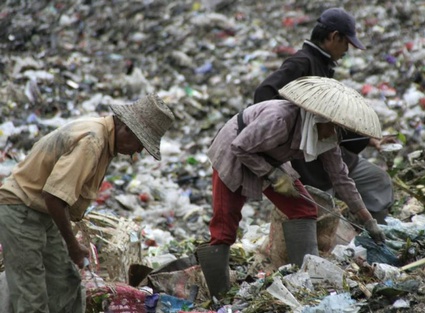 Photo garfieldcool on Chip online
Photo garfieldcool on Chip online
Making a living out of garbage is nothing unusual in Jakarta. The men and women who search through the 28,000 cubic meters of trash that Jakarta produces each day are called Pemulung. They look for valuable items, plastic, paper, metal which they can then sell for a few rupees (see also: Bas Princen, Mokattam Ridge (Garbage city)). They bring the trash to a local middleman who in turn dispatches them to an official recycling operation.
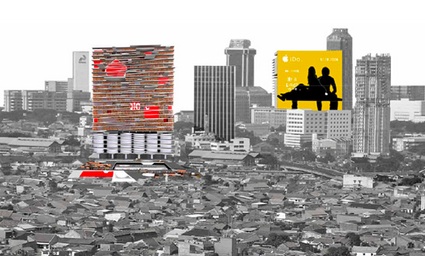 Jakarta Bersih! by NUNC architecten, 2009
Jakarta Bersih! by NUNC architecten, 2009
One of the facades of the buildings imagined by NUNC are designed as huge billboards. The revenue from this 70 meters high advertising could be used to facilitate and finance the cleaning communities in a scheme where commerce meets charity.
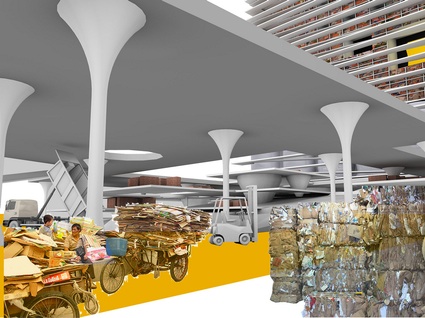 Jakarta Bersih! by NUNC Architecten, 2009
Jakarta Bersih! by NUNC Architecten, 2009
To read about the other winners of the competition, head to designboom.
Open City: Designing Coexistence is open at the Netherlands Architecture Institute (NAI) until January 10, 2010.
